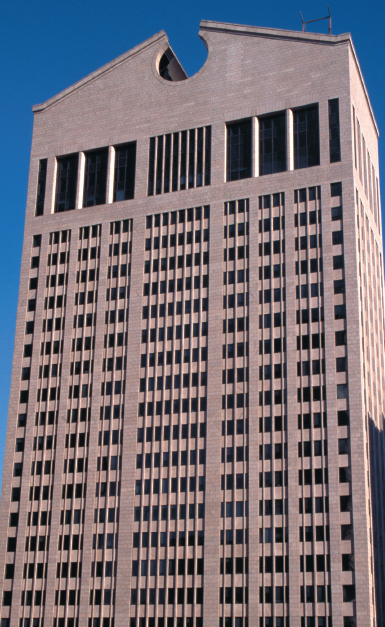New Expressionism and Connecting to the Past
The accessibility that marks minimalist music separated it from much avant-garde experiment of the 1950s and 1960s. Composers sought to make their music approachable in other styles as well, styles avoiding both the objective, machinelike repetitiousness of minimalism and the complexities that made avant-garde styles so difficult for listeners. These composers worked to achieve a more direct emotional expression.

Postmodern architecture: the Sony building in Manhattan (1984), designed by Philip Johnson. Unlike modernist skyscrapers, this building looks back knowingly on history. Its alternating wide and thin stripes recall early skyscrapers like the Empire State Building, and its topmost ornaments gesture toward antique furniture — a highboy or a grandfather clock. Alan Schein Photography/Corbis.
Their styles sometimes turned dramatically away from the second wave of the avant-garde, recalling instead late Romantic music. George Rochberg (1918–2005) started out as a forbidding serialist composer in the 1950s, but by the 1970s he was writing string quartets that at one moment sounded like Brahms and at another quoted whole passages from Wagner’s The Valkyrie. Ellen Taaffe Zwilich (b. 1939) combines yearning melodies reminiscent of Brahms or Mahler with non-Romantic, dissonant harmonies in her Symphony No. 1 (1982). By the time of her Concerto for Violin and Orchestra of 1998, late Romantic tonal harmonies are prominent. The moving second movement is based on a rhythmic ostinato; in it we can hear faint echoes of Vivaldi (see page 119).
New music like this that refers to styles older than modernism is sometimes called postmodern. The term is taken from analogous trends in the visual arts and especially in architecture. Like these other artists postmodern composers are not exactly antimodernist; rather, they pick and choose from modernist and many other styles — from the whole of music history before them, even — to achieve their expressive ends. We might think of these postmodernists as avant-garde in the true sense of the term; for hadn’t avant-garde composers like Ives, Varèse, and Cage sought above all else the expansion of choice and possibility in musical creativity? If the composer today can choose anything, why not choose to sound like Brahms or Vivaldi?
Still other composers, neither postmodernists nor minimalists, found ways to achieve the new, direct-speaking expression while maintaining a clearer connection to the experimental music of the decades after World War II. Some incorporated musical elements from nonclassical traditions, in the manner of William Grant Still or Aaron Copland, but did so with the expanded musical means of the experimenters. All strove to carve out their own individual styles, often highly dissonant, atonal, and venturesome in the use of new performing resources. Indeed eclecticism and stylistic variety have been watchwords of concert music composition since the 1970s, making it difficult to categorize individual works. In the following pages we examine three compositions of late modernism in very different styles.
